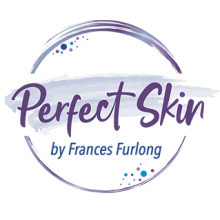Common Skin Complaints and How to Treat
Acne
Acne can affect all ages, not just teenagers, and the true cause is still a matter of debate. It occurs when oil-secreting glands in the skin get clogged and become inflamed or infected.
Despite the blockage, the glands, which are controlled by the sex hormones, carry on producing oil, resulting in a swelling and the characteristic spots – mostly on the face, shoulders, back or chest.
Treatment: The gold standard treatment for mild-to-moderate acne is combination therapy, which could include topical peeling agents, skin peels and antibiotics.
Body Odour and Underarm Sweating
Hyperhydrosis is not a temporary condition. Many people who suffer from it have suffered for many years, often from childhood or sometimes from adolescence. Hot or cold, the sweating is constant, and the impact of hyperhydrosis can be severe. Wetness and staining of clothes causes embarrassment!
Treatment: Prescribed aluminium salts applied daily to the area can help, but clients often find this too rigid and sometimes uncomfortable. Wrinkle Treatments is a very effective way of treating the condition and can last up to 6-8 months.
Cysts
Very little is known about these sac-like growths that form in the deeper layers of the skin when the lining of a hair follicle gets blocked.
They can occur almost anywhere on the body and can become inflamed, red and painful if the contents get into the surrounding skin.
Treatment: Although cysts are a nuisance, they are rarely harmful and antibiotics can be used to combat bacterial infections. However an injection of hydrocortisone to the cyst can reduce it quickly, often known as the cort shot – Hollywood stars swear by this treatment before red carpet events.
Dermatitis
One in five people will be affected by dermatitis or eczema at some time in their lives.
Anxiety and other stresses can trigger an attack, probably by weakening the normal immune system response. Avoidance tactics include showering rather than bathing, keeping the skin moist, wearing soft, smooth, cool clothing and protecting the skin from toxins.
Treatments: Steroid creams and ointments can be used to combat itching, but good Dermatologists often avoid steroid treatments as the problem may lie in a general disorder not connected directly to the skin. Looking at stress factors and topical allergy testing can be useful.
Flushing
Flushing is the result of blood vessels in the skin dilating. A wide range of causes include some drugs, various foods, hot drinks and alcohol. Hot flushes are a key symptom of the menopause.
Treatment: Avoid eating or drinking whatever triggers the flushing. HRT is an effective treatment for hot flushes and night sweats associated with the menopause. Intense Pulsed Light treatments and diathermy are a fantastic way to reduce the red vessels and breaking them down.
Hirsutism
Hirsutism is when a woman has excessive hair growth. The hair is usually thick and dark, rather than fine and fair.
What causes hirsutism?
Hirsutism is caused by an excess of male sex hormones called androgens, or an increased sensitivity to androgens. In most cases, this is caused by polycystic ovary syndrome (PCOS). However, in around 10% of cases there are no obvious causes.
Treatment: There is no cure for hirsutism, but there are treatments to manage the condition. Laser hair removal and electrolysis, also topical prescribed creams for the face can all help manage this condition.
Keloid Scars
These usually occur after an injury to the skin or severe acne, but can also be triggered by a scratch or shaving cut. When the skin starts to heal, something goes wrong and too much collagen gets into the scar, causing it to swell. While not dangerous, they can be painful, itchy and disfiguring.
Treatment: For severe cases surgery may be the only option, however laser and derma pen therapy can greatly reduce and improve them significantly, in the early stages of formation injectable steroids can help reduce inflammation.
Stretch Marks
The result of skin being stretched during pregnancy, weight gain or growth spurts, stretch marks are the visible red and purple signs that collagen has been damaged. As the skin recovers, it may lose normal pigmentation, resulting in the white scars associated with mature stretch marks.
Treatment: Targeted light technology can restore the pigment in white scars and laser can help red scars, derma pen and derma roller also help improve the scars to make them less obvious.
